By JULIE MINDA
When ministry facilities hire new employees, they are not just bringing them into a job — they are inviting them to take part in mission-based work.
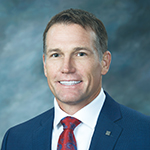
Ritchey
Catholic health systems and facilities are open about the centrality of their Catholic identity and intentional about how they recruit, hire, welcome and enculturate people into their new roles in the ministry, according to a sampling of mission and human resources executives.
"Associates must understand how our mission, vision and values relate to their role," says Jim Ritchey, system vice president for human resources operations for SCL Health. "We must ensure there's alignment. And we want to create a joyful work environment."
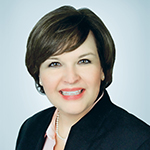
Simmen
Deborah Simmen, SCL Health system vice president of ministry formation, adds that the onboarding process presents an opportunity to bring new employees on as "ambassadors, influencers and advocates" for the organization's mission.
Common understanding
Many ministry systems that span regions and states have standardized their onboarding programming to have clear and consistent messaging about their organization's legacy, mission, vision and values.
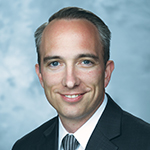
Till
Doing this right "is important because we really do believe the first thing we are is a ministry — we exist to continue the compassionate ministry of Jesus Christ," says Thomas Morris, Bon Secours Mercy Health chief sponsorship and theology officer. "We want to create a space, where everyone (in our organization) can grapple with how they connect their day-to-day work with their call" in the ministry.
Greg Till, Providence St. Joseph Health chief people officer, says in onboarding, "We want people to be inspired, to connect to our mission and heritage. We want to build a sense of connection between their work and their personal calling. This is part of our 'secret sauce.'"
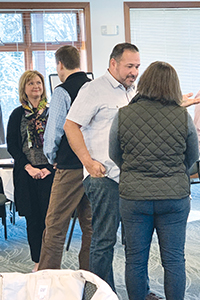
Onboarding sets the stage for formation work in the health ministry. Here, leaders connect at a Providence St. Joseph Health's Ministry Leadership Formation program in October 2019 at Palisades Retreat Center in Federal Way, Washington.
Secular society
Diarmuid Rooney, CHA senior director of ministry formation, says recruits and new employees "have their sniffers up," with many concerned that a Catholic health facility will try to convert them. "We have to show them the truth — we are not proselytizing; we are not trying to convert you. But we are extending an open invitation for you to join us" in the ministry's healing mission.
Simmen acknowledges that SCL Health has had to be very purposeful in how it invites people into its ministry. In many of the communities where the system provides health care, prospective hires may be put off by overtly religious language.
Providence's Till says some potential employees may have misperceptions about what it's like to work in a faith-based organization; they might guess the environment is only comfortable for those with certain beliefs. "We want everyone to know they're included in our mission no matter what their background or faith tradition is."
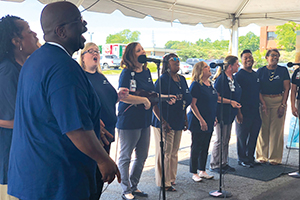
Ministry systems and facilities provide ongoing opportunities to connect staff with the organization's mission. Here, an SSM Health choir sings at an annual Mission Days event in June 2018.
Simmen says regardless of employees' background, "the focus of our onboarding process and continued formation strategy is not so much to change our associates, leaders or care providers' way of thinking, but to strengthen their personal understanding of community, connection and loving kindness to others."
For instance, Simmen says, at SCL Health's weekly new associate welcome sessions, leaders of the sessions tell the parable of the Good Samaritan, emphasizing the universally shared concept of the "neighbor" as it relates to human kindness, compassion and service to others. Presenters challenge the new employees to think about what their role has to do with serving others and how that relates to SCL Health's mission.
First impressions
All who spoke to Catholic Health World agree — onboarding begins well before a new hire walks in the door. Rooney says even third-party recruiters as well as internal hiring managers and interviewers must be "missioned" and present a comprehensive picture of what the organization is and stands for.
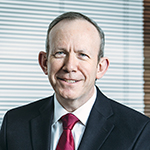
McCrudden
Patrick McCruden, SSM Health's chief mission integration officer, emphasizes that the hiring process is a time when candidates and hirers assess one another, and SSM aims to make an impactful impression from the start.
SSM makes its mission and values clear during the interviewing process, McCruden says, and hiring managers use standardized guides to assess how well candidates fit with SSM's culture.
Before a new hire's first day on the job, SSM provides links to videos on its legacy and mission. Providence provides many of its legal forms electronically so that new hires can complete paperwork before their arrival and be freed up on their first official day to concentrate on orientation content focused on Providence's mission.
Welcome
All the systems aim to make new employees' first day a welcoming, even inspiring one. At Providence, a mission leader escorts new hires from the lobby to their orientation session.
It's common to have group orientations for new hires. Mission leaders and/or top executives extend personal greetings and engage the audience in presentations that expose the organization's heart, purpose and culture.
Rooney notes that orientations are becoming less didactic now and flow more like a two-way conversation with the new hires.
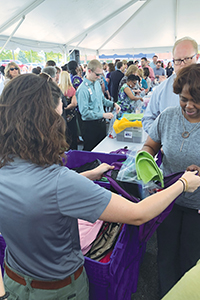
During SSM Health's Mission Days in June 2018, corporate employees assembled 450 personal hygiene kit for Great Circle, a nonprofit agency that provides behavioral health services and programs for more than 35,000 children and their families in Missouri each year.
Orientation presentations are heavy on storytelling since stories facilitate learning, impute meaning and engage emotions. There are usually videos about the work, vision and legacy of the organizations' founding congregations, and testimonials from staff and patients about what the organization means to them.
Simmen says also during employees' very early days at SCL Health and its facilities, leadership encourages them to connect with others. There are buddy matchups, lunches and mentoring programs available to help people quickly build a support system. Till says Providence takes a similar approach, with the goal of promoting a sense of belonging to a community.
And all the systems are intentional about checking in with new employees at set intervals — at 30 days, 60 days, 90 days and at a year, commonly — to assess how newcomers are doing with their assimilation into the organization and to provide additional mission-related information.
Sturdy foundation
According to the mission and human resources executives, onboarding sets the foundation for formation and ongoing mission programming. While each system has its own approach to formation and "missioning" of staff, all have some type of formal formation curriculum that varies by what type of role cohorts have in the organization be it clinical, nonclinical, executive, sponsor, or board member.
All of the systems provide opportunities throughout the year for staff to take part in mission-related activities such as service projects or brown bag lunches where a speaker presents a talk on a mission-related topic. Systems email reflections and prayers to all employees that illuminate the mission to them, to keep mission and spirituality top of mind.
SCL Health's Simmen says, "Onboarding is a continual process. We're partnering with our colleagues in developing our enterprise. This includes ministry formation and online learning throughout people's careers.
"All of this is so we can grow our talent and keep people engaged and loyal," she says.
New CHA resource provides framework for enhancing formation programs
CHA has created a new resource to help Catholic health systems and facilities to create or enhance their ministry formation programming. The resource will be available later this month from CHA's online store at chausa.org/store/storefront.
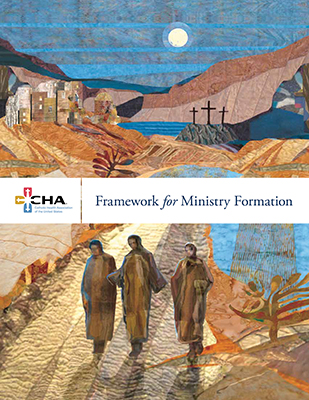 The 57-page "Framework for Ministry Formation" articulates what ministry formation is, setting forth six foundational elements of ministry formation: vocation, tradition, spirituality, Catholic social teaching, ethics and discernment. It provides a sample template for building out programming with those essentials.
The 57-page "Framework for Ministry Formation" articulates what ministry formation is, setting forth six foundational elements of ministry formation: vocation, tradition, spirituality, Catholic social teaching, ethics and discernment. It provides a sample template for building out programming with those essentials.
The booklet also describes the competencies that mission leaders specializing in leadership formation should have. Those attributes include personal qualifications, leadership characteristics, theology background, spiritual grounding, health care ethics knowledge, organizational management abilities and facilitation and presentation skills.
The booklet is part of a suite of resources, programming and education around formation that CHA provides to the ministry. The association developed the booklet in recognition of the fact that ministry systems and facilities are prioritizing formation of lay leadership to a much greater degree now than in the past. The women religious who led Catholic hospitals in the past had been formed by their congregations, said Diarmuid Rooney, CHA senior director of ministry formation, adding, "Now it's up to the ministry to form the leaders of the future."
To create the new resource, CHA worked with a group of ministry members and with the association's 13-member Ministry Formation Advisory Committee.
Sr. Mary Haddad, RSM, CHA president and chief executive officer, said of the new resource, "Leaders in Catholic health care have come to recognize the crucial importance of formation in ensuring the Catholic identity of our ministries.
"In response to member needs, CHA is committed to expanding opportunities for ministry formation and serving as a catalyst to strengthen the Catholic identity of CHA member organizations in carrying out the healing mission of the Catholic Church in the world today," she said.
— JULIE MINDA
Bon Secours Mercy draws employees into unified culture
Well before Bon Secours Health System and Mercy Health formally united on Sept. 1, 2018, to form Bon Secours Mercy Health, the organizations' top executives and sponsors were looking ahead to how they would create a new, unified culture.
According to Thomas Morris, chief sponsorship and theology officer of Bon Secours Mercy, a workgroup made up of mission leaders, sponsor leaders, communications experts and other executives from both Bon Secours and Mercy began to plan strategies the combined organization would use to achieve full integration of the mission and values, which had been articulated by the sponsor.
The workgroup determined that to create a new culture, Bon Secours Mercy would focus on prayer, standardized messaging and formation.
Bon Secours Mercy's mission is that it "extends the compassionate ministry of Jesus by improving the health and well-being of our communities and brings good help to those in need, especially people who are poor, dying and underserved." The system's vision is: "inspired by God's hope for the world, we will be a ministry where associates want to work, clinicians want to practice, people seek wellness and communities thrive." And its values are human dignity, integrity, compassion, stewardship and service.
On the day the merger took effect, all Bon Secours Mercy sites held a prayer service, with everyone systemwide using a single common prayer to represent unity. The system recalls the spirit of that day by using a common prayer service during systemwide commemorations that are called Foundation Days and that are connected with the history of the Sisters of Bon Secours, the Sisters of the Humility of Mary and the Sisters of Mercy.
The same carries through in the videos, messaging, presentations and related materials are used to onboard associates as they begin work at Bon Secours Mercy facilities.
The system's Marriottsville, Maryland-based Center for Ministry Formation helps to create and implement the formation programming. The programming is tailored to various groups, including leadership, associates, sponsors and board members.
In addition to formal formation opportunities, the three-year strategic formation plan includes ongoing touchpoints that engage associates at all levels in the Bon Secours Mercy mission on an ongoing basis. The system sends out daily reflections and prayers electronically and celebrates heritage days systemwide.
Morris says all of this work is geared to helping each person involved in carrying out Bon Secours Mercy's work to determine their particular linkage to the mission.
He acknowledges it's been a challenge to create unified messaging and programming, especially given how strong each of the legacy organizations was in its identity. But, he says the merged organization has seen much success in building up its own distinct culture. "What has been important is having ongoing communication and being clear on intentions.
"It's about what is best for the ministry," he says.